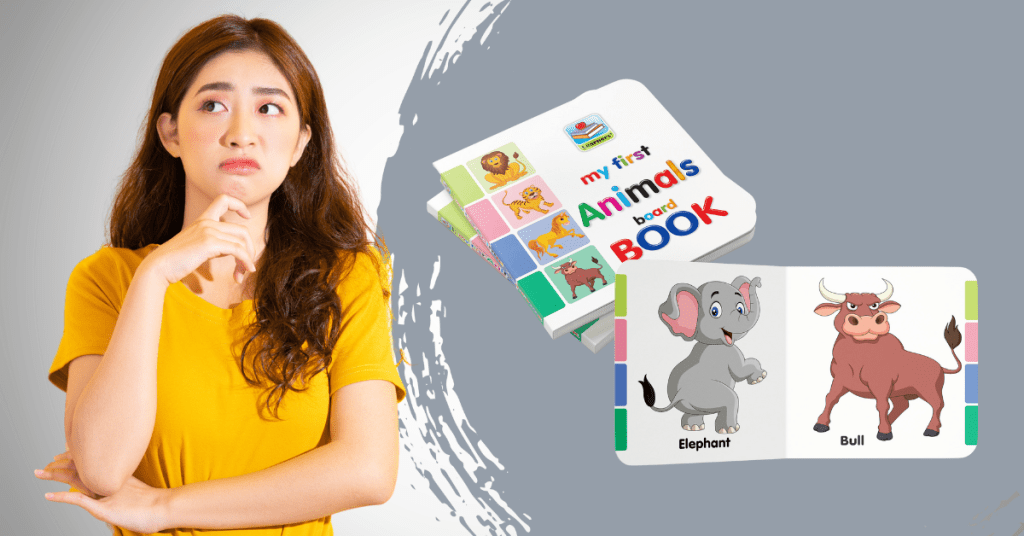
Print a Board Book: Risk These 7 and You'll Regret It Forever!
Don’t print your board book until you’ve explored these unique possibilities and crafted a book that not only entertains but also enriches the lives of young readers.
Authentic Info Guaranteed
Board books have long been a cherished staple in the world of children’s literature. Their durability, colorful pages, and engaging stories make them a favorite among parents, caregivers, and, most importantly, young readers. However, while many people may be familiar with the basics of creating a board book, there are some lesser-known but crucial aspects to consider.
In this article, we’ll delve into seven things that you should be aware of before printing your board book to ensure it stands out in quality and appeal.
Table of Contents
Toggle1. The Importance of Rounded Spines
When designing a board book, it’s easy to focus solely on the pages and illustrations. However, one often overlooked aspect is the spine. To create a board book that not only looks great but also lasts, consider rounding the spine’s edges. This design feature not only adds an extra layer of durability but also enhances the book’s overall aesthetics. Rounded spines not only make the book more comfortable to hold but also contribute to its longevity, preventing the corners from becoming frayed over time.
2. UV Coating for Protection
Board books are bound to encounter spills, sticky fingers, and the occasional mishap. To protect your board book from these inevitable challenges, consider using a UV coating on the pages. This protective layer makes the book more resistant to water damage and ensures that it remains vibrant and easy to clean. UV coating not only adds a layer of physical protection but also enhances the visual appeal, making colors pop and images more vivid.
3. Incorporating Sensory Elements
Children learn and explore the world through their senses, and incorporating sensory elements into your board book can enhance the reading experience. Consider including textured patches or inserts that children can touch and feel as they engage with the story. These tactile elements create a multi-sensory experience that captivates young readers and fosters sensory development.
4. Hidden Surprises Under Flaps
Children adore surprises, and hidden flaps can add an exciting element to your board book. These flaps can reveal hidden images, additional text, or interactive elements when lifted. This feature not only sparks curiosity but also encourages children to actively participate in the reading experience, making it more interactive and enjoyable.
5. Inclusion of Mirror Pages
Babies and toddlers are often fascinated by their own reflections. To captivate young readers and introduce them to this enchanting aspect of self-awareness, consider adding mirror pages to your board book. Not only will this feature delight children as they discover their own faces, but it also adds an element of personalization to the reading experience.
6. Utilizing Die-Cut Shapes
Die-cut shapes are a unique and visually appealing way to engage children’s attention. Incorporate various shapes into your board book’s pages to create windows, pop-ups, or layered scenes. These creative designs not only make your board book stand out on the shelf but also create an interactive reading experience that encourages exploration and discovery.
7. Interactive QR Codes
Incorporating modern technology into your board book can make it even more engaging for today’s tech-savvy children. Consider including interactive QR codes within the pages of your book. These codes can lead readers to online resources such as animated versions of the story, interactive games, or additional learning materials. By doing so, your board book becomes a multi-dimensional learning experience, seamlessly blending the physical and digital worlds.
Conclusion
Creating a board book that captures the hearts and minds of young readers involves more than just choosing a cute story and colorful illustrations. By paying attention to these seven unique aspects—rounded spines, UV coating, sensory elements, hidden flaps, mirror pages, die-cut shapes, and QR codes—you can ensure that your board book is not only memorable but also a source of joy and learning for children and their caregivers.
Embrace these innovative ideas, and your board book will undoubtedly stand out in the world of children’s literature. In doing so, you’ll create a board book that holds a special place in the hearts of children and their families for years to come.
Frequently Asked Questions
To make a board book, you typically start by creating or designing the content, including text and illustrations. Then, print the pages on thick, durable paper and laminate them. Bind the pages together using a specialized board book binding process, often involving gluing the pages to thick cardboard covers.
The cost of printing a board book can vary widely depending on factors like the size, number of pages, quality of materials, and the printing company used. Generally, printing a small batch of board books can cost between $5 to $10 per book, while larger print runs may reduce the cost per book.
Board books are typically printed on thick and durable paper, often referred to as board book or paperboard stock. This stock is known for its sturdiness and resistance to tearing, making it suitable for young children’s handling. It is usually coated or laminated for added protection against spills and wear and tear.
To publish your own board book, start by creating the content and illustrations. Then, you can either self-publish by finding a board book printer and handling distribution yourself, or you can seek out a traditional publisher who specializes in children’s books. Self-publishing allows more creative control but requires additional marketing efforts.
Related Posts

